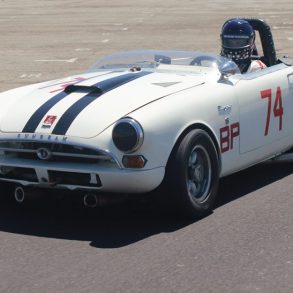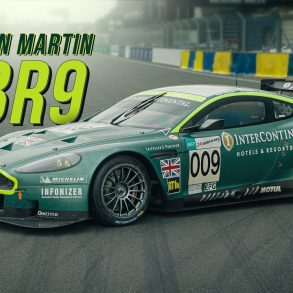Perhaps best known from his time as Competitions Manager of the British Motor Corporation, Marcus Chambers died in early August just short of his 99th birthday.
With a father an admiral in the Royal Navy, Chambers’s early life was influenced by time living in Australia, Canada, and France, as well as his native England where he developed interests in architecture, painting, photography, and anything automotive. He went on to be a skilled automotive engineer.
Chambers was also an accomplished driver with a 10th-place overall in the 1938 Le Mans 24 hour race in an HRG, a team that he would soon manage. During WWII he joined the Royal Navy and became skipper of one of the British Coastal Defence Motor Launches. After the war, he traveled to East Africa as part of the Overseas Food Corporation and, while there, met his wife Pat.
On their return to the UK, Chambers was approached by John Thornley, the boss of the MG Car Company, and asked to form a Competitions Department. At the time, apart from MGs, most BMC cars were not what you would call sporting, but Chambers set his sights entering a mix of Austin, Wolseley, Morris, and MG vehicles in events, not with outright victory in mind, but class and team success as well as ladies’ awards. Any success, however minor, was heralded in the press a day or two later.
By using this method and supporting gifted amateurs with their own cars, Chambers turned the Abingdon team into one of the most talented and determined in the industry. Moderate success soon turned into outright success with the arrival of a most unlikely of rally cars, the Austin-Healey. It was an outright win by Pat Moss and Anne Wisdom in the 1960 Liège-Rome-Liège endurance rally and subsequent success by the Morley brothers that showed the strategic nature of Chambers’s planning.
After 7 years at the helm at BMC, Chambers moved on, first to work with Ian Appleyard’s Jaguar dealership and then taking on the Competition Department for the Rootes Group (later Chrysler). Again, success followed, but in the form of a win for a Hillman Hunter in the 1968 London-to-Sydney marathon. However disillusioned with the lack of support from management, at age 60 Chambers resigned and went to work with ex-BMC driver John Sprinzel. He retired six years later to restore cars for many years and also enjoyed watercolor painting, photography, and the restoration of old houses.
With the passing of Marcus Chambers, we have lost a very special individual who featured large in British motoring history.
by Patrick Quinn










